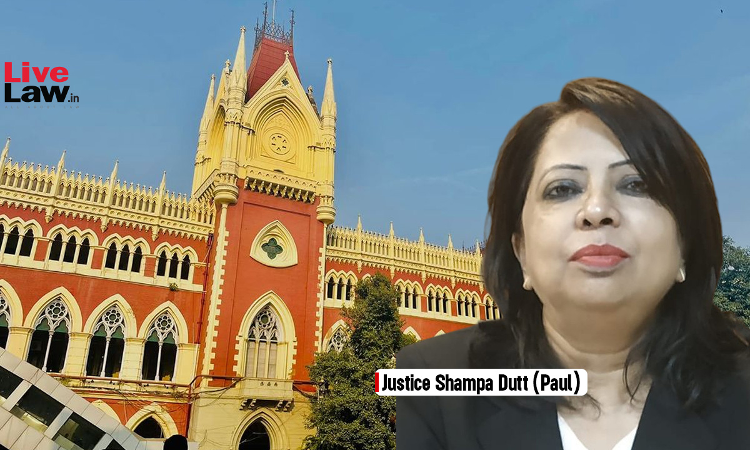Gratuity Dues Of Workers Do Not Form Part Of 'Liquidation Estate' Of Corporate Debtor, Must Be Paid In Full: Calcutta High Court
Tazeen Ahmed
27 Feb 2025 5:05 AM
The Calcutta High Court bench of Justice Shampa Dutt (Paul) has held that gratuity dues are statutorily protected under the Payment of Gratuity Act, 1972, and do not form part of the liquidation estate of the Corporate Debtor under the Insolvency and Bankruptcy Code, 2016 (IBC). The court held that gratuity payments are outside the waterfall mechanism under Section 53 of the IBC and must be...
The Calcutta High Court bench of Justice Shampa Dutt (Paul) has held that gratuity dues are statutorily protected under the Payment of Gratuity Act, 1972, and do not form part of the liquidation estate of the Corporate Debtor under the Insolvency and Bankruptcy Code, 2016 (IBC). The court held that gratuity payments are outside the waterfall mechanism under Section 53 of the IBC and must be paid in full, irrespective of the resolution plan. It further observed that Section 14 of the Payment of Gratuity Act has an overriding effect, ensuring that employees' statutory rights are upheld even in insolvency proceedings.
Background Facts
The petitioner filed the writ petition challenging the order dated 11.11.2024 passed by the Assistant Labour Commissioner (Central) & Controlling Authority in Case No. 48(24) 2020-E2 (Shri Arun Roy v. M/s Stesalit Limited). By the impugned order, the Controlling Authority had directed the payment of gratuity along with interest to Respondent No. 4, who was an ex-employee of the Corporate Debtor.
Contentions
The Petitioner challenged the impugned order inter alia on the ground that Respondent No. 4 had already filed his claim for gratuity before the Interim Resolution Professional (IRP) during the Corporate Insolvency Resolution Process (CIRP), which was duly admitted and awarded as per the approved Resolution Plan. Respondent No. 4 had not challenged the approved Resolution Plan before the Adjudicating Authority. The Petitioner also argued that since the IBC is a special legislation, it overrides the Payment of Gratuity Act, 1972, as per Section 238 of the IBC.
Per contra, Respondent No. 4 objected to the maintainability of the petition, arguing that the Petitioner had an alternative remedy before the Regional Labour Commissioner (Appellate Authority) but had directly approached the writ court without exhausting statutory remedies. Respondent No. 4 also contended that the Petitioner in a circuitous manner was challenging Section 10 of the Payment of Gratuity Act, 1972.
Observations
The Court referred to SBI v. Moser Baer Karamchari Union, where the NCLAT held that “PF, Pension Fund and Gratuity Fund does not come within the meaning of Assets of Corporate Debtor for distribution under S. 53 IBC”.
In Savan Godiwala, the Liquidator of Lanco Infratech Limited vs. Apalla Siva Kumar, the Supreme Court had observed that “Even if no fund is kept, the liquidator must make adequate provisions for paying gratuities to the applicants in accordance with their eligibility. The Liquidator cannot avoid the obligation to pay gratuities to the employees on the grounds that the CD did not maintain separate funds”.
On “Gratuity” and its Interplay with IBC
The court noted that “Gratuity” is a sum payable by the employer to his workers upon completing service for the prescribed period of time. Once the company is brought to an end by the liquidation, then such payment is to be paid to the workers. Simultaneously, the IBC provides for the formation of a “liquidation estate” containing all the assets of the debtor, that are distributed to the creditors in terms of waterfall mechanism under Section 53 of the IBC.
The court observed that the issue arose because if the gratuity falls under the “liquidation estate” and is to be distributed in terms of Section 53, then the workers may not get their dues in total.
The court noted that Section 36(4)(a)(iii) of the IBC stipulates that all sums due to any workman or employee from the provident fund, the pension fund and the gratuity fund do not form part of the “liquidation estate”.
The Court referred to Somesh Bagchi v. Nicco Corpn. Ltd. and SBI v. Moser Baer Karamchari Union, where the NCLAT held that gratuity does not form a part of the liquidation estate. It further referred to Alchemist Asset Reconstruction Co. Ltd. v. Moser Baer India Ltd where the NCLT held that amount due towards the workers cannot be used for the purposes of distribution in terms of Section 53 of the IBC.
The claim of respondent no. 4, though considered, was not awarded in full. The court held that the dues of the workers have to be paid in full. It observed that the dues for the welfare of the workers are not permissible to be included in the liquidation estate and are to be utilized only for the payment of the dues of such workers in full.
The court held that the claim was in respect of gratuity in respect of an “employee‟ which is guided by Payment of Gratuity Act.
The controlling authority had observed that under Section 36(4) of the Code, gratuity dues are distinct; they are not simply part of the debtor's assets but represent the earned entitlements of employees. In contrast, “workmen's dues”, defined in Section 53 are a form of retrenchment compensation upon liquidation.
Findings of the Controlling Authority
The controlling authority had observed that gratuity payments are classified as excluded dues and therefore, remain outside the scope of asset distribution among creditors under the waterfall mechanism in Section 53 of the IBC. It was noted that the employer held no proprietary right over these amounts, as they had accrued through the employees' services. The controlling authority had referred to Jet Aircraft Maintenance Engineers Welfare Association Vs. Ashish Chhawchharia RP of Jet Airways (India) Ltd. & Ors., which held that since provident fund and gratuity are excluded from the liquidation estate under Section 36(4)(b)(iii), workers and employees are entitled to full amount of provident fund and gratuity. The controlling authority had further observed that workers' assets are not subject to distribution under Section 53 of the IBC and that Section 14 of the Payment of Gratuity Act, 1972, grants the Act overriding authority.
The controlling authority had directed respondent to pay gratuity amounting to Rs. 2.11 lakh along with simple interest @ 10% p.a. till the actual payment within 30 days of the order on 11.11.2024.
Final Observations of the Court
The court concurred with the findings of the controlling authority and held that all "employees" are covered under the Payment of Gratuity Act. It further held that the controlling authority had jurisdiction to decide the issue of gratuity since the company had never closed down.
The court observed that the entire dues of the workers would not fall under “liquidation assets”; a worker would be entitled to receive his total dues from the assets of the company.
The court dismissed the writ petition.
Case Title: M/s. Stesalit Limited Vs Union of India & Ors.
Case Number: WPA 532 of 2025
For the Petitioner : Mr. Jishnu Chowdhury, Sr. Adv. Mr. Divyakant Lahoti, Ms. Shrinalli Kajaria, Mr. Vijay Kumar, Ms. Pramena Bisht, Mr. Madhus Jhaver, Mr. Siddharth Tripathi.
For the Respondent no. 4 : Mr. Subhash Chandra Sarkar.
Date of Judgment: 21.02.2025
Click Here To Read/Download The Order

